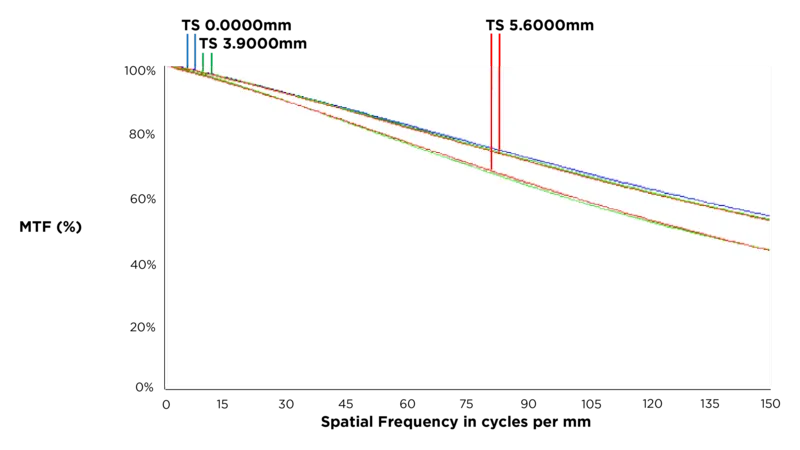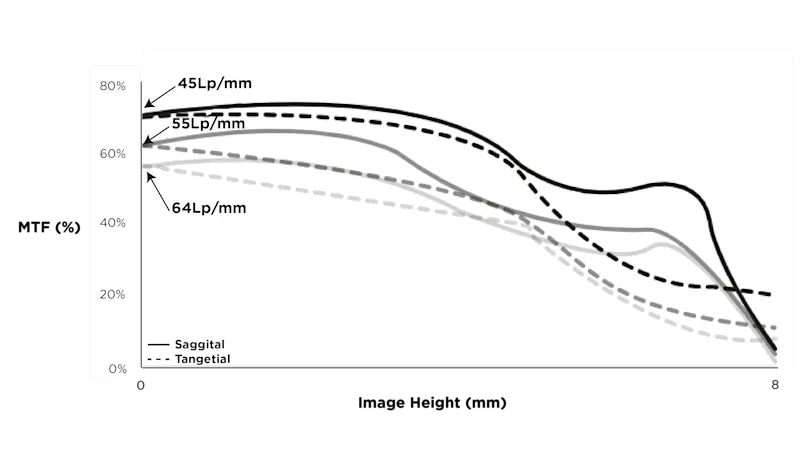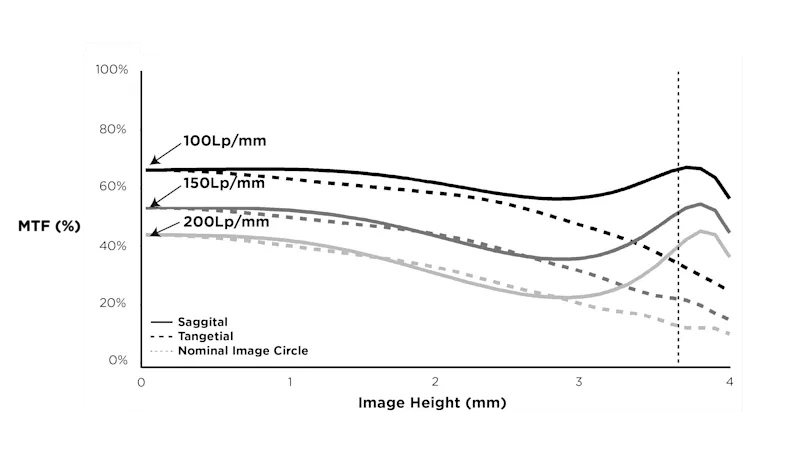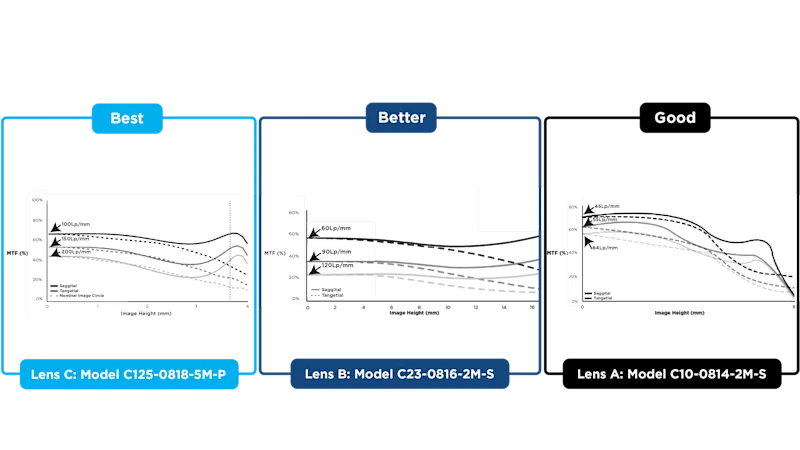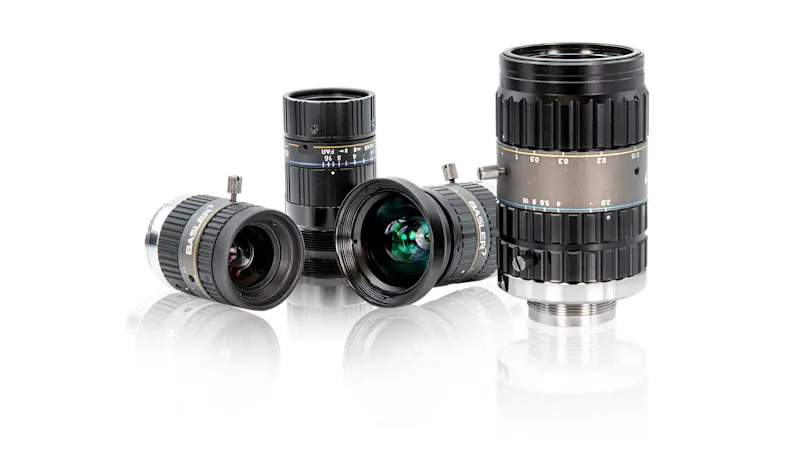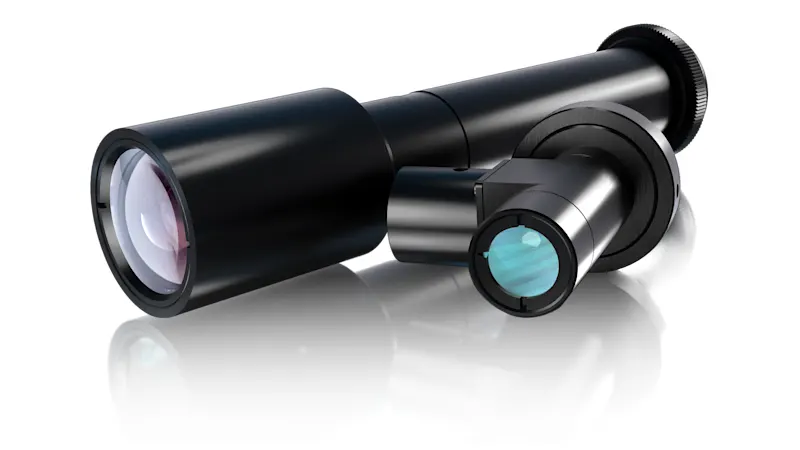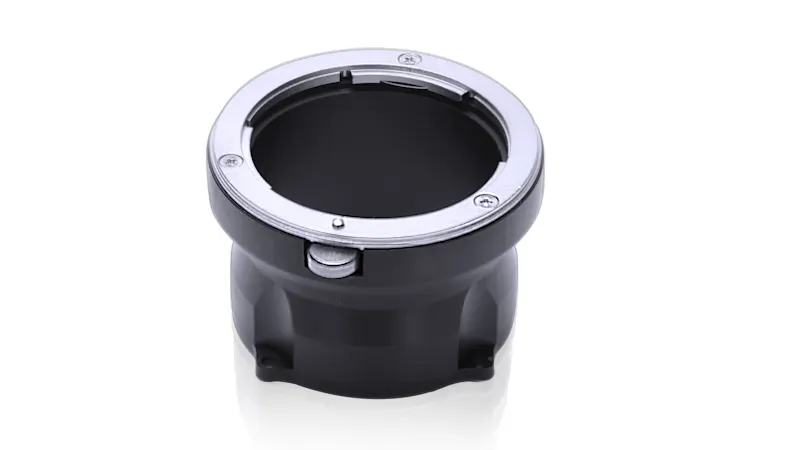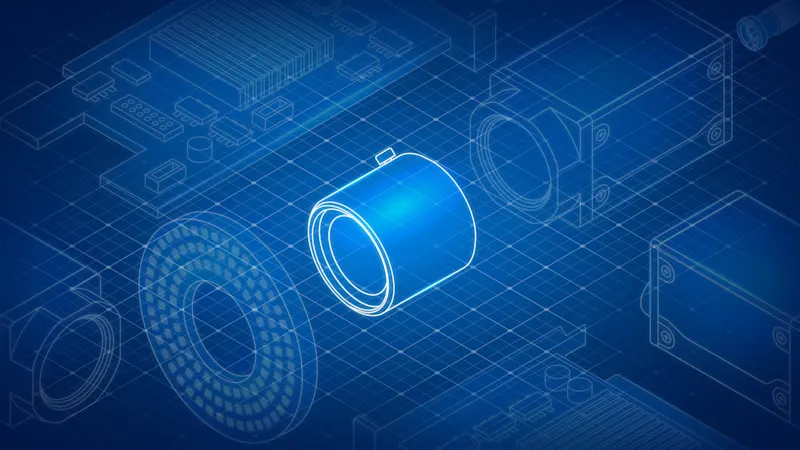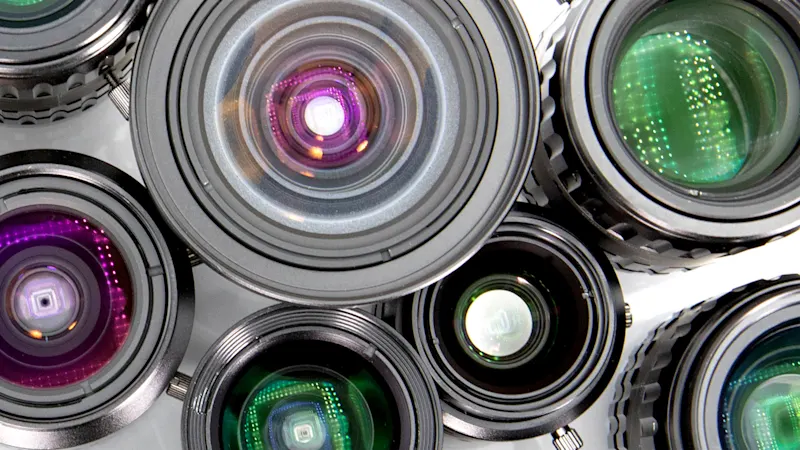Understanding the Use of MTF in Evaluating Lens Quality
MTF measures a lens's ability to maintain contrast at specific resolutions, presented graphically for easy interpretation. Learn to read MTF graphs to compare lenses' resolution capabilities and optimize your selection.

Lens selection tips
In our white paper, we demonstrate how to achieve the best image quality with the right lens. We explain key factors such as mount, image circle, focal length, resolution, and aperture.
Picking the best lens using an MTF graph
It is often a challenge to pick the right lens, since a lens's performance is not easily determined by specific measurements like camera or computer specifications. For this reason, lens manufacturers created standard methods of measuring lens performance under a controlled environment and offer the testing results as MTF information for their products.
The MTF (Modulation Transfer Function) graph is useful not only for industrial users, but also for commercial users. The following illustration is an example of the MTF graph typically used by commercial customers, including those who engage in photography as a hobby or profession. These users typically utilize the MTF graph for a quick assessment of a lens's contrast and sharpness rather than for precise measurement.
For industrial lens users, it is highly recommended to utilize the MTF (Modulation Transfer Function) graph more proactively for a better assessment of the lens's resolution, contrast performance, and consistent image quality. In this article, we will to go into more detail about MTF graphs and share how you can use them for better lens comparisons.

What is MTF (Modulation Transfer Function)?
MTF (Modulation Transfer Function) is a measure of the ability of an optical system to transfer contrast from the object to the image. It describes the level of contrast a lens delivers at a specific resolution, e.g. Y % at X lp/mm.
Line pairs per millimeter (lp/mm), a unit of measurement that refers to pairs of alternating dark and white lines (line pairs) that can be distinguished in one millimeter of an image.
For example,
If you have 1 lp/mm, it means there's 1 pair of lines within a 1mm distance, with each line having a spacing of 0.5mm between them.
Similarly, 10 lp/mm would mean there are 10 pairs or 20 lines within that 1mm, with each line spaced 0.05mm apart.
Applying the same logic, the spacing of lines at 100 lp/mm would be 5 µm (0.005mm).
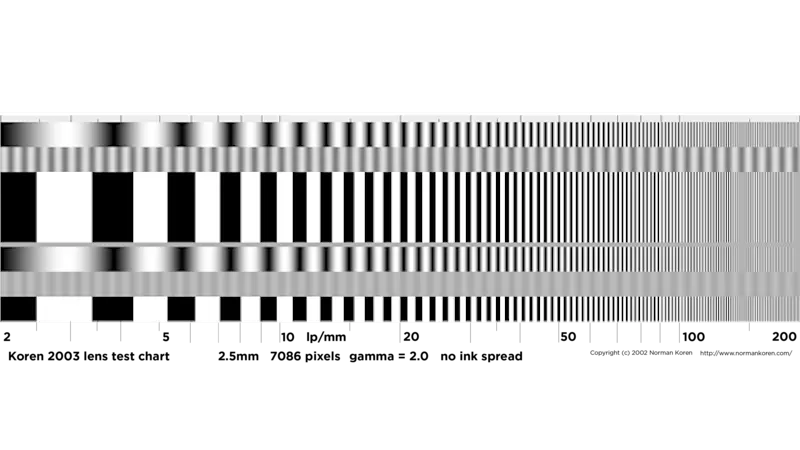
In the context of resolution, higher values of lp/mm indicate a finer level of detail that the optical system can capture. Therefore, the number of lines that can be resolved becomes an important performance criterion for the optical system.
In reality, the smaller the spacing of the stripes, the harder it becomes for optical systems (like lenses and cameras) to express them—as shown in the illustration below. Lenses capture these line patterns and project them onto a sensor, and as the line spacing decreases, it becomes increasingly challenging to accurately reproduce them. Consequently, as the line spacing becomes tighter, the contrast of the black and white lines represented through the lens decreases. The MTF (Modulation Transfer Function) graph visually represents this phenomenon, helping us understand how well a lens can reproduce fine details in terms of contrast.

Types of MTF graphs
MTF information is plotted onto MTF graphs for easy visualization when assessing the resolution of a lens, and it can be presented in different ways. Generally, MTF graphs are broadly categorized into two main types. The first type (MTF Graph by Frequency) presents the X-axis in terms of lp/mm (line pairs per millimeter). However, this type of graph has the drawback of not accurately depicting a lens's MTF performance across the entire sensor. To address this, the second type of graph (MTF Graph by Image Circle) has been introduced. In this graph, the X-axis represents the position (beginning at the center of the sensor and moving toward its edges), allowing for a more precise assessment of the lens's performance across the entire sensor. However, it has the limitation of only examining specific lp/mm values. For this reason, in most cases, these graphs display representative lp/mm values simultaneously.
These graphs are not different MTFs, they just present the information in different ways. MTF Graph by Frequency indicate how much of the object's contrast is captured in the image as a function of spatial frequency. MTF Graph by Image Circle shows the value changes from the center of the lens's image circle to the outside at a specific lp/mm. This can be extremely useful, especially when large fields of view are in play. Now, let’s have a closer look at both types of MTF graphs.
What are the Tangential Lines (T) and Sagittal Lines (S)?
A typical MTF graph includes both Tangential Lines (T) and Sagittal Lines (S). The Tangential Line (T)—also known as Meridional—is displayed as solid lines showing the tangential MTF measurements, while the dotted lines show Sagittal MTF. Sagittal means that the test pattern lines are parallel to a line running from the center of the image to the corner, while tangential lines are perpendicular to that diagonal. Usually, the MTF value of the solid line is higher because the lens is generally manufactured based on the tangential direction.
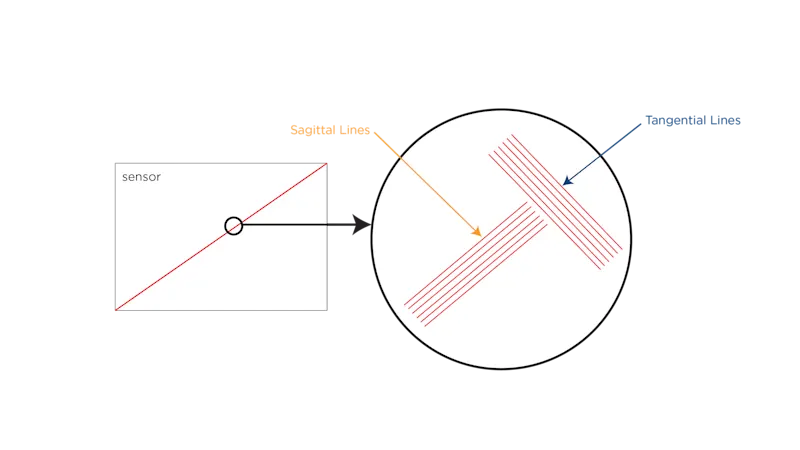
In general, similar sagittal and tangential characteristics create a more uniform image. This means that if the sagittal and tangential lines are closer to each other on an MTF graph, the images produced by the lens will have more uniform image performance on both the X-axis (horizontal) and Y-axis (vertical). On the other hand, if the sagittal and tangential lines diverge across an image, it indicates an uneven image with aberrations—meaning the lens is astigmatic. Ideally you want the curves to be closer to each other for more uniform image performance.
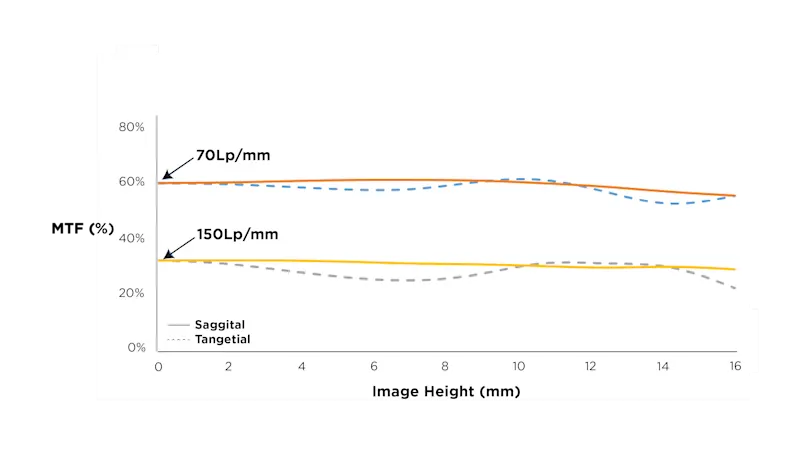
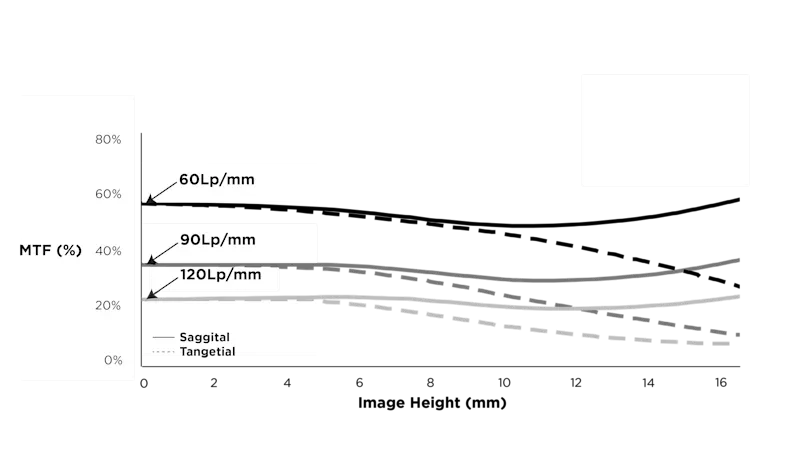
Using MTF graphs to assess lens's resolution capabilities
In general, MTF graphs with high values indicate good contrast and resolution, meaning that the optical system is capable of reproducing fine details in the image. On the other hand, a low MTF value at a specific spatial frequency indicates a loss of contrast and resolution at a specific level of detail.
Now, with more understanding of MTF graphs, you will be able to perform quality assessment and comparison across different manufacturers' products or compare different models from the same manufacturer.
Take a look at the MTF graphs for the lens models below. What can you determine about their resolution capabilities?
Summary
MTF graphs are a good indicator for lens performance and help with choosing the right lens. Here are some advantages:
Resolution Assessment: MTF graphs provide a quantitative measure of a lens's ability to reproduce fine details. Higher MTF values indicate better resolution, helping you select lenses that suit your needs for sharpness.
Contrast Performance: MTF graphs show contrast levels at various spatial frequencies. High contrast is crucial for image clarity, and MTF graphs help you to evaluate a lens's contrast performance under different conditions.
Performance across the Image Sensor: MTF graphs provide insights into a lens's performance across the entire image frame. This helps you select lenses that suit your requirement for consistent image quality from the center of the frame to the corners.
By comparing MTF graphs of different lenses, you can make informed decisions based on the optical characteristics that matter most for your specific needs. In a real application, there may also be additional factors, such as sensor image size, magnification, and F/# sensor specifications to be considered.
Our lenses & matching accessories
Take advantage of our broad portfolio and choose the right product for your vision system. Ourlens selector helps you to easily choose the right lens for your overall system.
